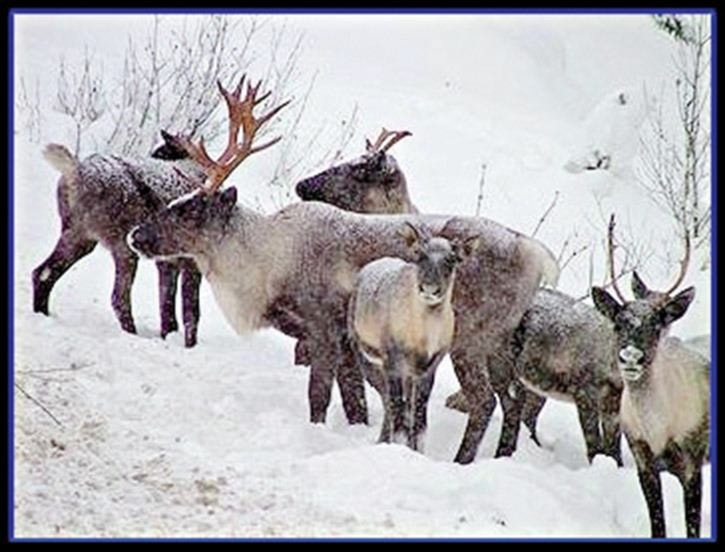The Ministry of Forests, Lands and Natural Resources Operations has issued a reminder asking snowmobilers to respect winter habitat areas for caribou.
Under B.C.’s Mountain Caribou Recovery Implementation Plan areas that have been closed for recreational snowmobile use were identified by a caribou specialist starting in 2005 through 2007, said the ministry’s manager of fish and wildlife recovery implementation Chris Ritchie Thursday.
“Those are those high elevation engelmann spruce, sub-alpine fir forests and up into the alpine, not severe steep mountain conditions, but more rolling circle-bowl-like areas,” Ritchie said.
Snowmobile activity can affect the animals’ behaviour, prompting them to move into less suitable habitat where the food supply is not as plentiful or where their activity in steep terrain could create avalanche hazards, a press release from the ministry noted.
If mountain caribou are forced out of an area unnecessarily, the caribous’ energy reserves can be depleted during this critical time of the year.
In the Cariboo specifically, areas impacted by the closure include Yanks Peak, Mica Mountain and in the Wells-Barkerville region.
“Closure areas are broadly distributed both within what we call the Cariboo Region — the Quesnel area — and also from Mackenzie down to the U.S. border.”
Overall caribou numbers continue in decline in the Cariboo region, Ritchie said.
The ministry was thinking it was seeing some positive conditions in the Barkerville herd, however, when they were surveyed last year, the numbers were a lot lower.
“But biologists are hoping that was an artifact of the actual survey, that the animals just weren’t there when they went looking for them,” Ritchie said. “We’re going to try and do surveys again this winter to confirm that we have a positive situation and not a blippy cycle.”
Surveys are typically done in the middle to the end of March.
The goal is to stabilize herds and reach a number of 2,500 caribou across the province by 2024, he added.
Presently there are around 1,600.
When it comes to enforcing the closures, the ministry has worked with provincial organizations and local snowmobiling clubs to get information out and to get support when conservation officers are on patrol issuing tickets.
“We’ve also worked with them on developing information packages that will work for their sector,” Ritchie said. “It doesn’t do any good to do any government talk if we can’t get our message out.”
One of the things they’ve worked on are stewardship management areas in caribou habit that would otherwise be closed.
Partnerships exist with the local clubs to manage the areas.
Clubs provide signage and information, to undertake patrols, to amp up the commitment to manage the “good conduct” and compliance of the sledders at what the ministry hopes is a manageable risk to caribou, Ritchie said.
Enforcement patrols start late January and go until early April each year.
In 2013 about 20 tickets were issued across the province, Ritchie said. Areas closed can be found at http://www.env.gov.bc.ca/fw/wildlife/snowmobile-closures/.
